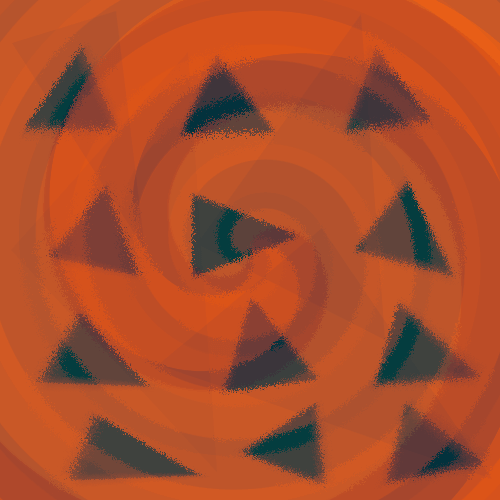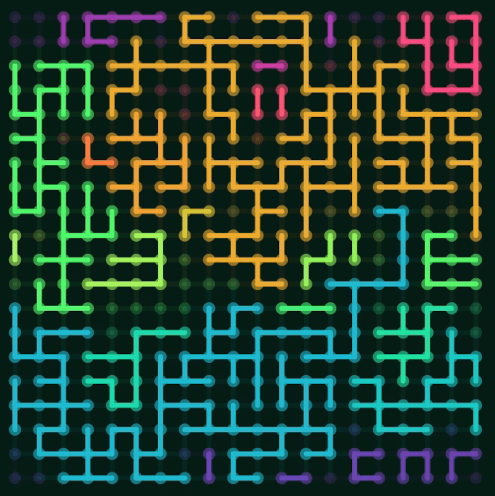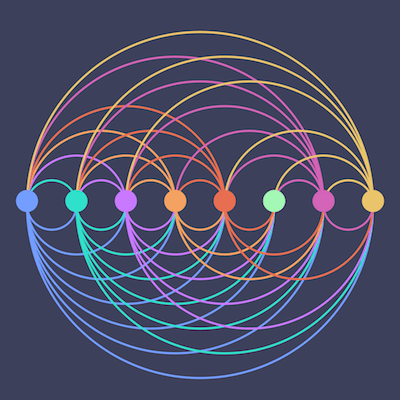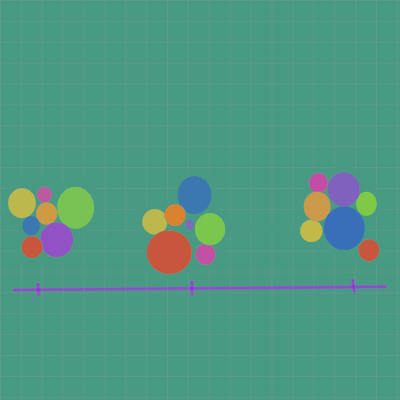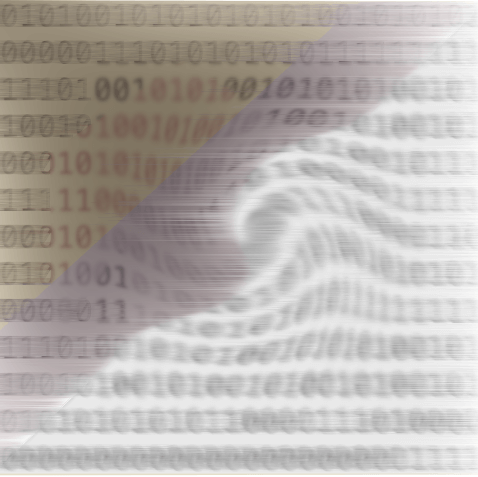Starting out with general purpose computing on the GPU, we are going to write a WebGPU compute shader to compute Morton Codes from an array of 3-D coordinates. This is the first step to detecting collisions between pairs of points.
Read MorePosts about JavaScript
In this post, I am dipping my toes into the world of compute shaders in WebGPU. This is the first of a series on building a particle simulation with collision detection using the GPU.
Read MoreThis blog post walks through the process of writing a fragment shader in GLSL, and using it within the three.js library for working with WebGL. We will render a visually appealing grid of rotating rectangles that can be used as a website background.
Read MoreKruskal's algorithm finds a minimum spanning tree in an undirected, connected and weighted graph. We will use a union-find algorithm to do this, and generate a random maze from a grid of points.
Read MoreIn part II of building arc diagrams in D3.js we will build the actual diagram with data from ride hailing app trips we prepared in Part I. Drawing the arc is the most complicated part of this visualization, and we will go through it step by step.
Read MoreYou might be familiar with force layouts in D3.js to create things like bubble charts, network graphs and many other types of visualizations. In this post we will create a force layout bubble chart with multiple clusters along a timeline.
Read MoreToday I will go over what a force-directed graph is and how to build one in D3.js. This graph is built using data extracted from New York Times articles to show items that are talked about in the articles.
Read More

